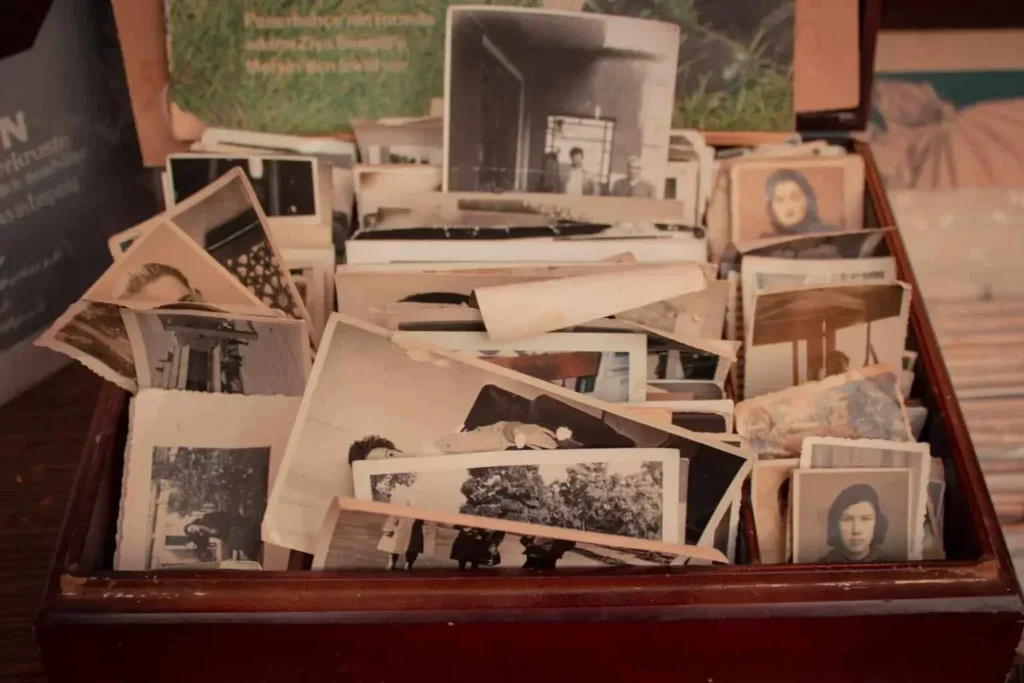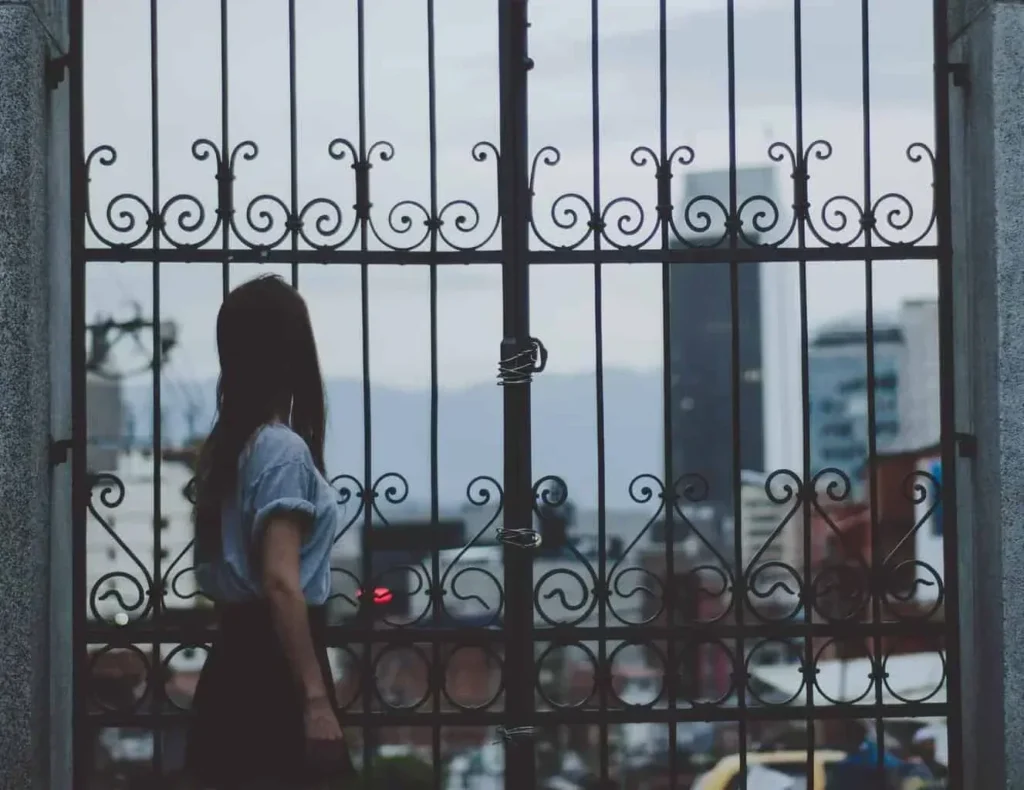So, you’re wondering if the retro trend is more closely linked to the iconic 80s era or the nostalgic 90s? Well, you’re not alone in this debate. It seems that everywhere you turn these days, you’re bombarded with neon colors, high-waisted jeans, and scrunchies – all quintessential elements from both decades. But which one truly holds the title for “retro”? Let’s take a closer look at the style and cultural influences of these two iconic periods to settle this age-old question once and for all.
Understanding Retro Style
Defining Retro
Retro refers to a style that draws inspiration from the past, particularly the fashion, music, and culture of previous decades. It is characterized by its nostalgic and vintage appeal. The term “retro” itself comes from the Latin word “retro,” meaning backwards or back in time. In essence, retro style seeks to recreate and pay homage to the trends and aesthetics of yesteryears.
Significance of Retro Style
Retro style is much more than just a fashion trend or a passing phase. It holds great significance in our society and culture. One of the main reasons for its enduring popularity is its ability to evoke feelings of nostalgia and sentimentality. Retro style transports us back to a time, immersing us in the sights and sounds of a bygone era. It allows us to relive or experience the things we might have missed out on.
Furthermore, retro style also serves as a creative outlet and a source of inspiration for artists, designers, and musicians. It provides a rich tapestry of ideas and influences that can be incorporated into contemporary works. By reimagining and reinventing elements from the past, retro style keeps our cultural heritage alive and brings a touch of the familiar to our modern world.
Characteristics of Retro Style
Retro style encompasses a wide range of characteristics that vary depending on the specific era being referenced. However, there are a few key elements that are often associated with retro style in general. These include bold and vibrant colors, geometric patterns, unique typography, and distinctive silhouettes. Retro style also embraces a sense of individuality and self-expression, encouraging people to break free from conformity and embrace their own personal style.
The Retro Lovers
Who is Interested in Retro?
Retro style has a broad appeal and captivates a diverse range of individuals. People of all ages, backgrounds, and social groups can be drawn to the charm and allure of retro. The retro lovers can be found amongst fashion enthusiasts, music aficionados, movie buffs, and even those interested in interior design.
Why the Love for Retro?
There are several reasons why people are drawn to retro style. For many, it’s the nostalgia and sentimental value associated with a particular era. It allows them to reminisce about their childhood or youthful days, when things seemed simpler and more carefree. Retro style offers a sense of comfort, grounding people in a time that holds personal significance for them.
Additionally, retro style often represents a departure from the fast-paced and ever-evolving nature of modern life. It offers a sense of escape and a chance to indulge in a more laid-back and slower-paced lifestyle of the past. Retro lovers appreciate the uniqueness and authenticity of vintage items and find joy in the hunt for one-of-a-kind treasures.
Impacts of Retro Style on Popular Culture
Retro style has left an indelible mark on popular culture. It has influenced fashion trends, interior design, music, movies, and even technology. Retro-inspired designs have made a comeback on fashion runways, with designers incorporating elements from past eras into their collections. Retro music, such as synth-pop from the 80s or grunge from the 90s, continues to resonate with audiences and inspire contemporary artists. Movies and TV shows often tap into the appeal of retro aesthetics, creating nostalgic experiences and capturing the imagination of viewers.

This image is property of images.pexels.com.
80s as Retro
Identifying Characteristics of 80s Retro
The 80s was a decade known for its bold and eclectic style. It was an era of excess, reflecting the flamboyant nature of the times. Some key characteristics of 80s retro style include vibrant neon colors, exaggerated silhouettes, and an abundance of sequins and shoulder pads. The fashion of the 80s was daring and daringly different.
Popular 80s Retro Fashion
In terms of fashion, the 80s brought us an array of iconic styles. Leggings, ripped jeans, and oversized sweaters were all the rage, especially when paired with colorful sneakers or high-top boots. Women flaunted voluminous hairstyles and teased their hair to incredible heights, often supported by excessive use of hairspray. Men, on the other hand, embraced the power suit, complete with strong shoulder pads and vibrant patterns. The 80s fashion was loud, extravagant, and unapologetically individualistic.
Influence of 80s Retro in Music and Movies
The 80s was a time of great innovation and bold experimentation in music and movies. Iconic bands such as Madonna, Michael Jackson, and Prince dominated the music scene with their unique sound and flamboyant performances. The use of synthesizers and electronic beats became synonymous with the era, giving rise to genres like new wave and synth-pop.
In movies, the 80s witnessed the birth of teen comedies and coming-of-age films, which have since become cult classics. Films like “The Breakfast Club” and “Ferris Bueller’s Day Off” embodied the spirit of the times and continue to be celebrated for their nostalgic appeal.
Iconic 80s Retro Trends
Neon Colors
One of the most recognizable aspects of 80s retro style is the use of vibrant neon colors. From fluorescent pink to electric blue, neon shades were a staple in fashion, interior design, and even art. These bold and eye-catching colors added an element of fun and excitement, perfectly embodying the lively and exuberant atmosphere of the 80s.
Big Hair and Shoulder Pads
The 80s was synonymous with big hair styles, with both men and women embracing voluminous locks. Women teased their hair to create gravity-defying hairstyles, often accompanied by brightly colored scrunchies or headbands. Shoulder pads were another defining feature of 80s fashion, adding structure and power to jackets and dresses. This exaggerated silhouette symbolized the confidence and assertiveness of the era.
80s Retro Music
From the synth-pop sounds of bands like Depeche Mode and Duran Duran to the energetic rock anthems of Bon Jovi and Guns N’ Roses, 80s music offered a diverse and electrifying soundtrack to the decade. The use of synthesizers and electronic instruments created a futuristic and energetic sound that still resonates with audiences today. Whether it was dancing to Madonna’s catchy tunes or headbanging to the heavy metal roar of Metallica, 80s music had a profound impact on popular culture.
Video Games of the 80s
The 80s also saw the rise of video games and arcades. Classic games like Pac-Man, Space Invaders, and Super Mario Bros. captured the imaginations of both young and old, paving the way for the gaming industry as we know it today. The simple yet addictive gameplay, combined with the colorful and pixelated graphics, appealed to a broad audience and laid the foundation for the gaming revolution that followed.

This image is property of images.pexels.com.
90s as Retro
Identifying Features of 90s Retro
The 90s marked a shift from the eccentricity of the 80s to a more relaxed and grungy style. It was a decade characterized by minimalism, streetwear, and anti-establishment attitudes. The fashion of the 90s was defined by casual and comfortable clothing, rejecting the over-the-top trends of the previous decade.
Popular 90s Retro Fashion
In the 90s, fashion took a more laid-back approach, with an emphasis on simplicity and minimalism. The grunge trend emerged, popularized by bands like Nirvana and Pearl Jam. Flannel shirts, ripped jeans, and combat boots became the uniform of the rebellious youth. Alongside the grunge movement, streetwear gained traction, with baggy jeans, oversized t-shirts, and sneakers dominating the scene.
Influence of 90s Retro in Music and Movies
The 90s witnessed a shift in music and movies, as well. Grunge music, with its raw and angst-filled sound, resonated with a generation disillusioned with mainstream culture. Bands like Nirvana, Soundgarden, and Alice in Chains became the voice of the 90s youth rebellion, expressing their frustrations and discontent.
In movies, the 90s brought us cult classics such as “Pulp Fiction” and “Clueless.” These films captured the essence of the decade, showcasing its unique style and cultural influences. The rise of independent cinema and the exploration of diverse themes allowed for the creation of thought-provoking and groundbreaking movies.
Iconic 90s Retro Trends
Grunge Fashion
Grunge fashion emerged as the epitome of 90s retro style, reflecting a rebellious and nonchalant attitude. The look was characterized by flannel shirts, ripped jeans, leather jackets, and band t-shirts. This disheveled and effortless style rejected the polished aesthetics of previous decades, instead embracing a more unrefined and individualistic approach.
90s Television Shows
The 90s introduced a slew of iconic television shows that have since become cultural touchstones. From “Friends” to “The Fresh Prince of Bel-Air,” these shows captured the spirit of the times and continue to enjoy enduring popularity through reruns and streaming platforms. The fashion, slang, and cultural references in these shows serve as a time capsule, transporting viewers back to the 90s.
The Rise of Pop Music
The 90s witnessed the rise of pop music and boy bands, with acts like Backstreet Boys, *NSYNC, and Spice Girls dominating the charts. These groups not only had catchy tunes but also became cultural phenomena, captivating audiences with their synchronized dance routines and vibrant personalities. Pop music of the 90s was fun, upbeat, and highly commercialized, appealing to both teenagers and adults alike.
Arcade Games of the 90s
While the 80s introduced the world to video games, the 90s saw their evolution and proliferation. Arcades became popular gathering places for gamers, offering a variety of games that catered to different interests. From fighting games like Street Fighter II to racing games like Daytona USA, arcades provided hours of entertainment and friendly competition.

This image is property of images.pexels.com.
80s vs 90s Retro: Major Differences
Differences in Fashion
One of the major differences between 80s and 90s retro style lies in fashion. The 80s embraced bold and vibrant colors, exaggerated silhouettes, and flashy accessories. On the other hand, the 90s favored a more minimalist and grungy aesthetic, with a focus on simplicity and comfort. While both eras were characterized by their unique and distinct styles, they represented different attitudes and cultural shifts.
Changes in Music and Film
The music and film industries also underwent significant changes between the 80s and 90s. The 80s saw the rise of synth-pop and new wave music, characterized by electronic beats and catchy melodies. In contrast, the 90s embraced grunge, alternative rock, and a greater emphasis on individual expression.
Similarly, in movies, the 80s brought us iconic teen comedies and glossy action flicks, while the 90s delved into more complex narratives and genres, such as independent cinema and psychological thrillers. These differences reflect the evolving tastes and cultural shifts between the two eras.
Evolution of Technology
The 80s and 90s also marked significant advancements in technology. While the 80s introduced the world to home computers, video games, and Walkmans, the 90s brought about the rise of the internet, mobile phones, and CD players. These technological advancements had a profound impact on the way people consumed media, communicated, and experienced the world around them.
Contemporary Use of 80s and 90s Retro Styles
Reviving Retro in Fashion
Both 80s and 90s retro styles have experienced a revival in recent years, with fashion designers and brands incorporating elements from these eras into their collections. Whether it’s the resurgence of neon colors and shoulder pads from the 80s or the reimagining of grunge fashion from the 90s, retro styles continue to inspire and influence the fashion industry.
Retro Influence in Modern Music
Retro styles and sounds have also made a comeback in contemporary music. Artists like Bruno Mars, Lady Gaga, and The Weeknd have drawn inspiration from the music of past decades, incorporating elements of funk, disco, and synth-pop into their own unique sound. This fusion of retro and modern styles creates a nostalgic yet fresh musical experience for listeners.
Use of Retro Themes in Movies and TV Shows
The popularity of retro styles extends beyond the realms of fashion and music. Movies and TV shows often embrace retro themes and aesthetics to appeal to a wide audience. Whether it’s the reimagining of classic franchises or the creation of new stories set in a specific era, retro themes add a touch of familiarity and nostalgia that resonate with viewers.
Why Retro is Still Relevant
The Nostalgia Factor
One of the main reasons why retro styles remain popular is the nostalgia they evoke. People are drawn to the familiarity and sentimental value associated with a particular era. Retro styles allow individuals to reconnect with their past and relive cherished memories. The longing for simpler times and the comfort found in nostalgia continue to drive the enduring popularity of retro.
Influence on Today’s Design Trends
Retro styles have a substantial influence on contemporary design trends. Fashion designers often take inspiration from vintage pieces, incorporating retro elements into their modern creations. Interior designers also draw on retro aesthetics, utilizing vintage furniture and decor to create unique and eclectic spaces. The influence of retro design can be seen in various industries, from graphic design to product packaging, adding a touch of nostalgia to our everyday lives.
Enduring Popularity of Retro
Retro styles have stood the test of time and resonate with multiple generations. The fact that they can be adapted and reimagined to suit modern sensibilities speaks to their enduring popularity. Each era brings a unique aesthetic and cultural significance, allowing individuals to choose the retro style that resonates most with them. Whether it’s the exuberance of the 80s or the grunge of the 90s, retro styles continue to captivate and inspire.
Is Retro 80s or 90s? The Conclusion
Evaluating Retro’s Multifaceted Characteristics
After exploring the defining features, popular trends, and enduring impact of both 80s and 90s retro styles, it becomes evident that retro cannot be confined to a single era. Retro is a multifaceted concept that draws inspiration from various decades and cultural movements. It encompasses not only fashion, but also music, movies, and technology.
Reason behind the Popularity of Both 80s and 90s Retro
The popularity of both 80s and 90s retro can be attributed to the nostalgia factor and the timeless appeal of each era. The 80s represent a bold and flamboyant time of excess and self-expression, while the 90s embody a more relaxed and grungy aesthetic, capturing the rebellious spirit of the decade. Both eras offer something unique and resonate with different individuals based on personal experiences and preferences.
Final Thoughts
Retro style continues to captivate and inspire people across generations. It allows us to embrace the past, celebrate our cultural heritage, and find solace in the familiar. Whether it’s the vibrant neon colors of the 80s or the minimalist grunge fashion of the 90s, retro style continues to be relevant and influential in our modern world. So, whether you’re an 80s enthusiast or a 90s aficionado, embrace the retro style that speaks to you and indulge in the nostalgia it offers.

